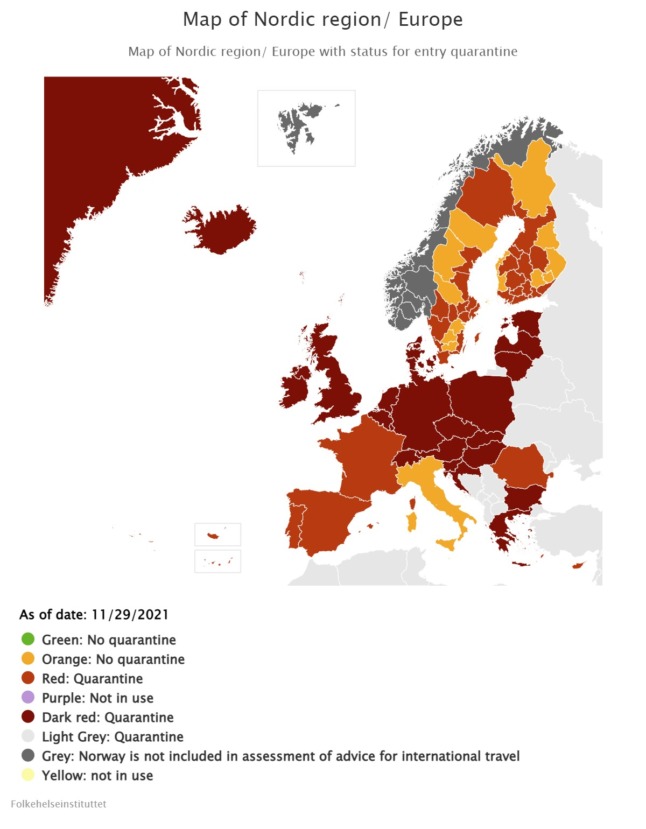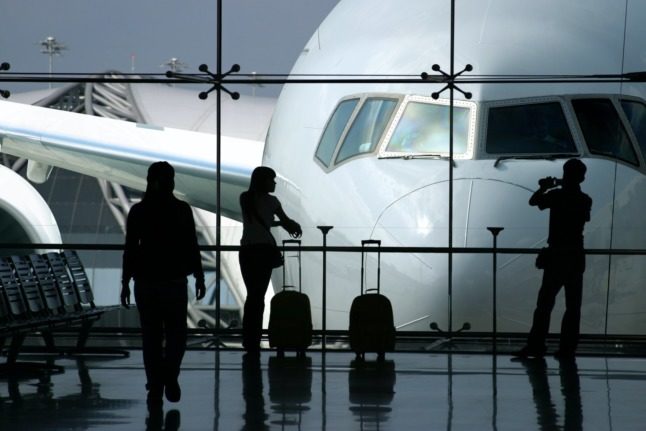Like many countries, Norway uses a colour classification system when assessing the infection control situation in other countries. This colour-coded system then forms the basis of the nation’s travel and quarantine rules.
Norway’s colour-coded system is currently only used for determining whether certain passengers need to enter quarantine or not. However, it has also previously decided which kind of travellers were allowed to enter the country.
Who has to quarantine when arriving in Norway?
Travellers who haven’t been fully vaccinated or previously recovered from the virus, or those who do not have an approved health pass, will need to quarantine when arriving from certain countries.
Norway currently only recognises health passes compatible with the EU scheme and digital certificates from the United Kingdom and a handful of other non-EEA countries as proof of vaccination or having recovered from the disease. Furthermore, you will only be considered fully vaccinated one week after your final jab.
READ ALSO: Norway tightens Covid-19 testing rules for travellers
This means that travellers from countries whose health passes aren’t recognised, for example, those from America, will need to quarantine regardless of vaccine or infection status.
Additionally, travellers, regardless of vaccination status or whether they have an approved health pass, will need to enter a quarantine hotel when arriving from or having previously stayed in South Africa, Namibia, Zimbabwe, Botswana, Mozambique, Lesotho, Eswatini and Malawi.
How does the colour coded system work?
In Norway, countries are classified into green, orange, red, dark red, and light grey countries.
All countries outside the Schengen Area and the UK are classed as light grey. Countries within the Schengen and the UK are classified green to dark red depending on infection severity.
Green and orange countries have low levels of Covid-19 infections per 100,000 inhabitants and allow all travellers, regardless of vaccination status, prior infection or whether they have an approved health pass, to skip quarantine entirely.
READ ALSO: What to expect if you are travelling to and from Norway this Christmas
Red, dark red and light grey countries all trigger a quarantine obligation for travellers that aren’t eligible to skip the isolation period.
What are the quarantine rules?
The quarantine period lasts for ten days. However, you can leave travel quarantine following a negative PCR test taken no sooner than three days after your arrival. This means, typically, you can expect an isolation period of around five to six days, depending on the length of time it takes to process your test.
Unless you are arriving from one of eight southern African countries, you will not be required to stay at a quarantine hotel. Those who have to stay at the hotels can finish the isolation period at home or another suitable location after returning a negative test taken after the third day.
Quarantine hotels remain an option for the entire isolation period for those who do not have a suitable place to isolate. Generally speaking, an appropriate location is somewhere with its own private bedroom and where you can maintain social distance from others and where you do not need to share food prep and bathroom facilities.
When in quarantine, you will need to avoid visits and not go to work, school or attend other activities. You shouldn’t take long trips across the country or use public transport. You can go to shops for essential reasons, but must socially distance. You are allowed to go for walks but must maintain a social distance of two metres.
Which countries currently trigger a quarantine duty
As noted above, all non-Schengen countries, excluding the UK, will automatically trigger quarantine if the arrival doesn’t meet vaccination, immunity or health pass requirements.
Additionally, red and dark red countries in the Schengen area, the UK included, will also trigger an isolation obligation.
The latest travel map from the Norwegian Institute of Public Health can be seen below. The map is updated every Monday, and changes are typically announced on Fridays based on the latest infection figures from the European Centre for Disease Prevention and Control (ECDC).




 Please whitelist us to continue reading.
Please whitelist us to continue reading.
Member comments